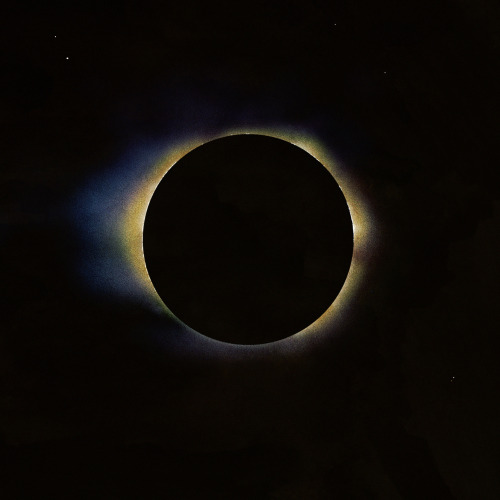#electronic art
7E Interview with Artist/Musician Dan McPharlin
Few weeks ago, we posted an article about our favorite Sci-Fi Artist Dan McPharlin. We had an opportunity to interview him about his process of art, science fiction, music, synthesizers, and gear.
7E- What is the earliest sci-fi you remember being exposed to? (Do you have a library of your favorite pasttime books, sleeves, material you could kindly share with us?) (See photo above that Dan shared with us!)
DM-When I was growing up in the late 70s, early 80s there seemed to be a lot of sci-fi around. I think many kids of that era just soaked it all in. The enthusiasm generated by the Apollo missions was still fuelling public fascination (and optimism) about space exploration and then films like Star Wars kicked things along nicely. My earliest cinematic memory was seeing Empire Strikes Back in the theatre, and I definitely remember being obsessed with Dr. Who. Jon Pertwee, Tom Baker era episodes were a nightly fixture on Australian public television for a number of years. The windswept quarries, medieval British towns juxtaposed with strange aliens and sci-fi hardware fuelled my imagination. There was something about the quaint Britishness of it all that I connected with. Then I began to discover the artwork of artists like Chris Foss and Roger Dean and there was no looking back!
7E- How do germs of ideas for new artworks usually emerge?
DM- Ideas usually emerge from an emotional rather than a technical inception. My art is about juxtapositions of the familiar and the strange, the natural and the manufactured. I try to imagine how it would feel to inhabit a particular environment, to set foot on the soil of a distant world. The figures in my pictures are a stand in for the audience (and myself) so as I’m painting I’m really exploring the landscape at the same time. I like to depict moments of quiet contemplation rather than action or violence and I don’t shy away from mystery or ambiguity.
7E- We’ve read that you primarily work digitally using Photoshop and Wacom. What are some tools you can not live without? Do you create an isolated color palette for each artwork or do you improvise your color choice as you go?
DM- Photoshop is the main software I use. I’ve worked hard to create a set of digital tools that are as analogous to traditional painting as possible. Facing a blank canvas is always daunting so I have a lot of ‘prepared canvases’ that give me a starting point. I usually come up with textures using traditional media which gets scanned in and chopped up in Photoshop. For example, with a series of pieces I just finished I created many of these textures using acrylics mixed with dishwashing soap. Sometimes I might even begin with an older piece of work and start painting over the top. The colour palette will tend to evolve as I go. I use the Photoshop colour-picker a lot, using the painting itself as my colour mixer, constantly switching brushes, opacity etc. The ‘feel’ of mark making has become more important to me over the years and I often place textured papers over the Wacom to simulate different materials.
7E- Could you list several musicians/artists you’ve been listening to lately while illustrating.
DM- Hector Zazou, Ryuichi Sakamoto, Steve Reich, a lot of the old BBC Radiophonic Workshop stuff, a bit of Krautrock and early 90s Warp releases.
I often put together playlists or mixes of favourite tracks to listen to while I work. I’ve recently started collecting these together and releasing them: https://soundcloud.com/cosmonostro/sets/transmissions-a-mix-series-by
7E- Which synth(s) do you currently own?
DM- I have a Synthesizers.com modular, Roland SH-101, Roland MKS-80 + Programmer, Ensoniq SQ-80, Nord Modular, a few digital things, Roland TR-808, Roland MC-4, Roland SPV-355, various samplers, analogue outboard, tape echoes. I think I could probably make do with just the modular, although I have something of an addiction to outboard effects units. My favourite way to make music is just to turn off all the computers and bounce voltages around the studio for 4 hours.
7E- Was there ever a “synth that got away”, or a piece of music gear you regret selling?
DM- I remember when a Moog Sonic 6 came up for sale for a really good price about 10 years ago. I probably should have jumped on it but at the time I was only buying modular gear and couldn’t really justify owning another monosynth. I’m a bit of a collector by nature (perhaps hoarder is the correct word!) and at the time I remember thinking do I really need this to make music, or do I just like the idea of owning it. I’m sure that inner struggle is familiar to many.
7E- What inspired the papercraft series?
DM- I suppose it was a way to express my love of analogue technology while trying to imagine an alternative timeline where digital synths like the DX-7 had never come to be; if analogue synths had continued to develop unchallenged, what would they look like? It was also a way for me to explore the aesthetics of technological objects using a non-technological medium like cardboard or paper. I wanted these objects to exist in the world and the only way for that to happen was to build them out of the materials I had around me.
(© all rights reserved.)
Post link





